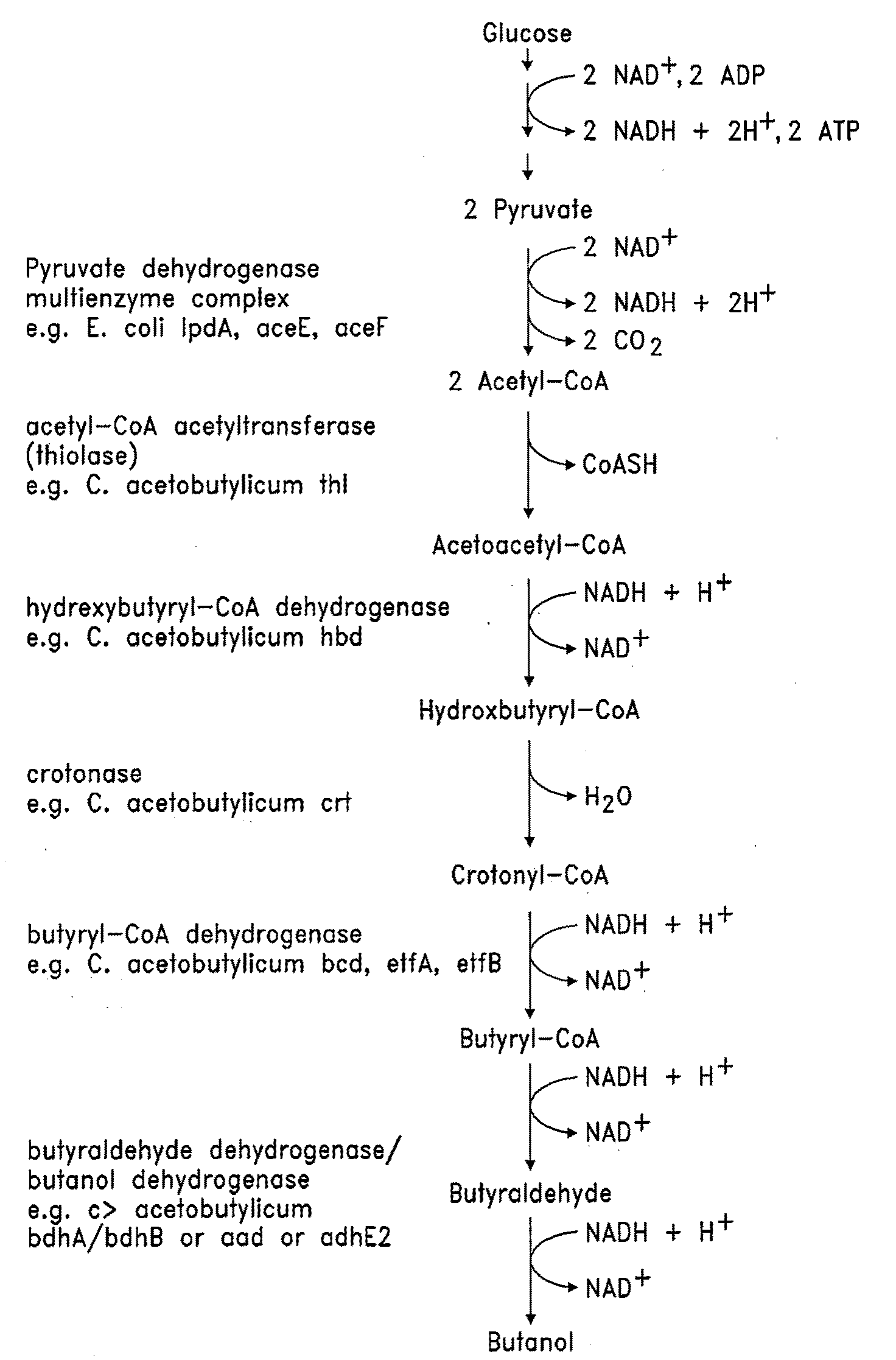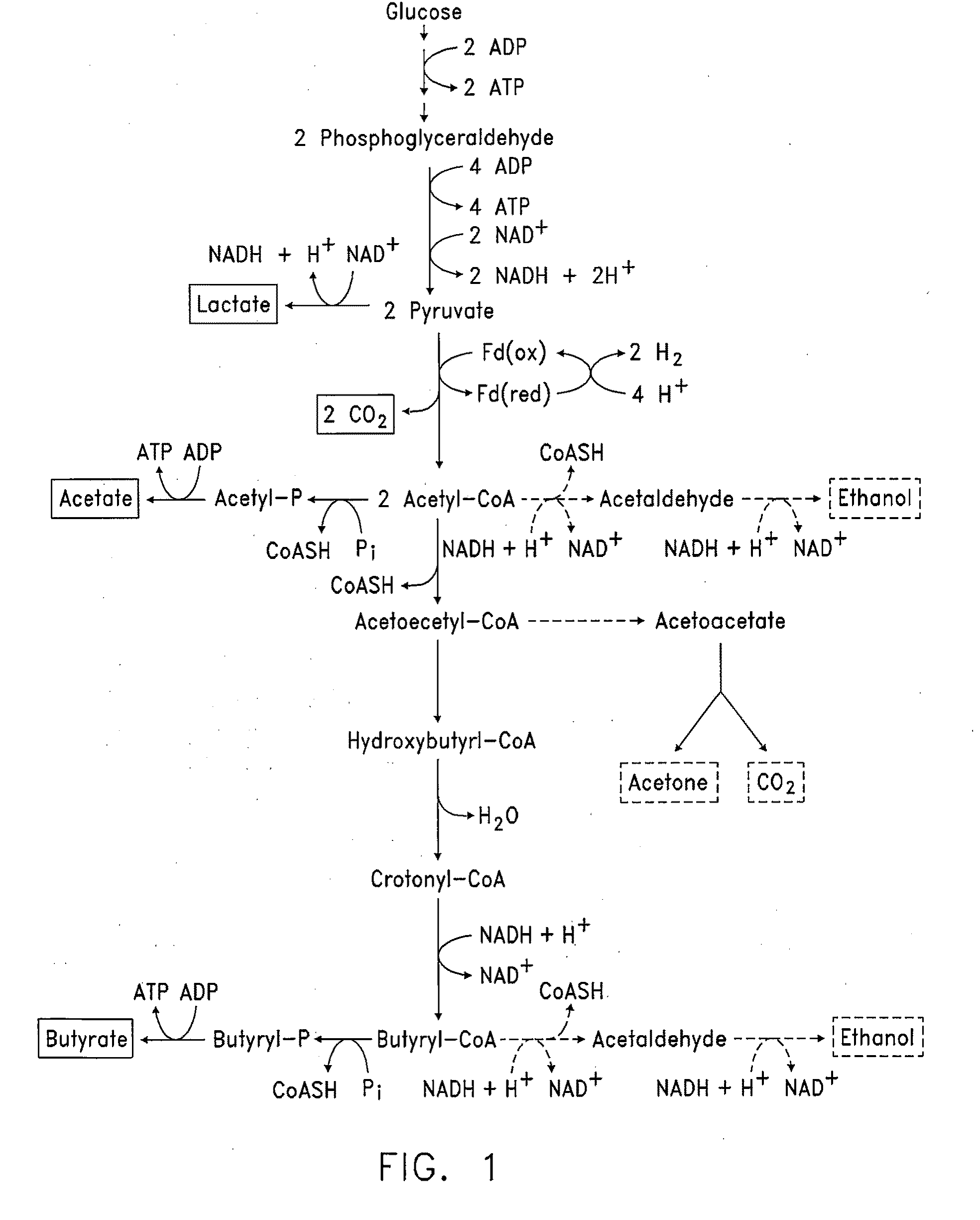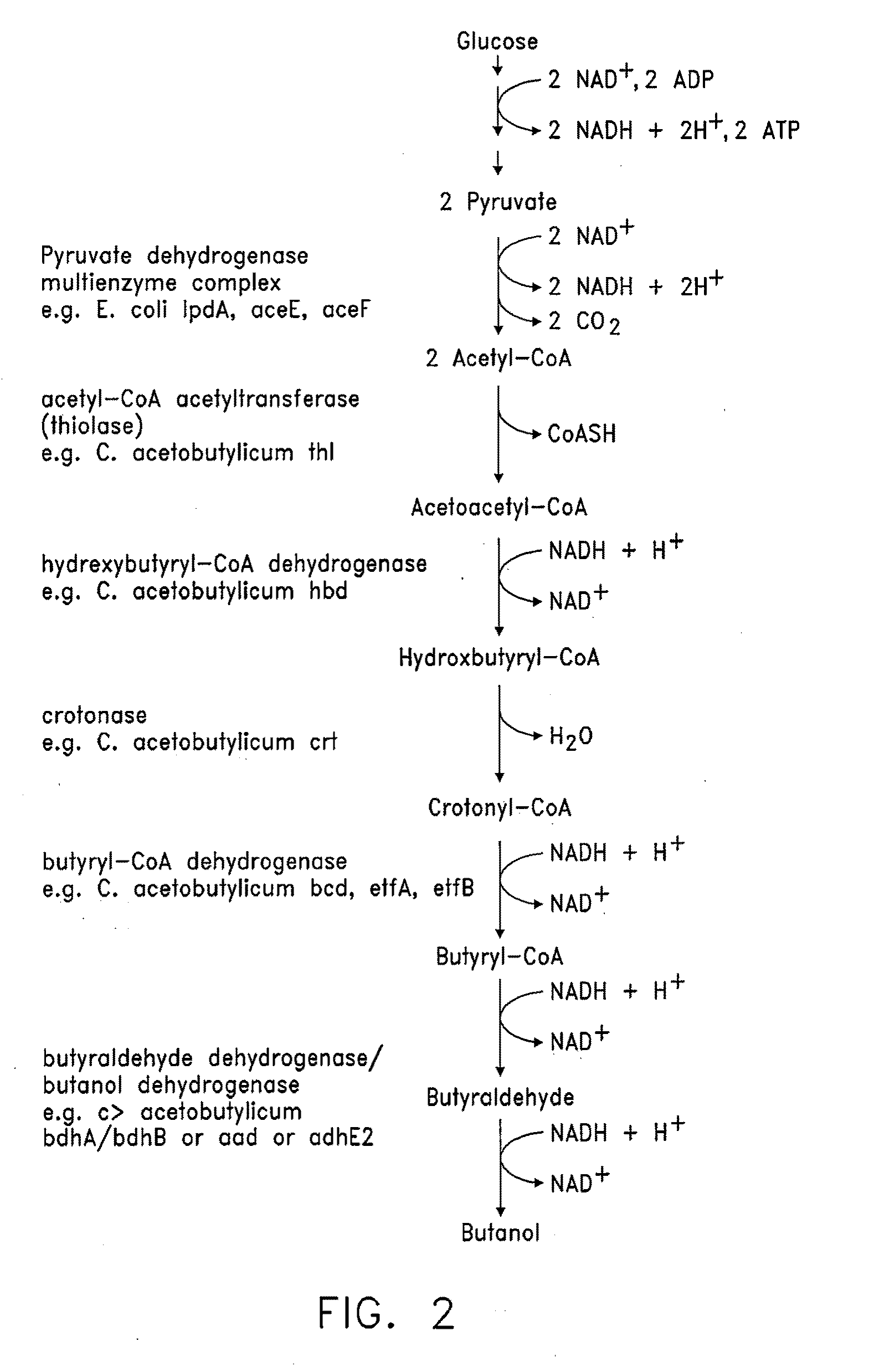Butanol production by metabolically engineered yeast
a technology of metabolic engineering and yeast cells, applied in the field of metabolic engineering yeast cells, can solve the problems of clostridium /i>, difficult to retrieve from groundwater and soil contamination, and only growing quantities of consumption, and achieve the effect of increasing the metabolic activity of yeast and increasing the amount of cytosolic acetyl-coa
- Summary
- Abstract
- Description
- Claims
- Application Information
AI Technical Summary
Benefits of technology
Problems solved by technology
Method used
Image
Examples
example 1
Plasmid Construction for Expression of Butanol Pathway Genes in the Yeast, S. cerevisiae
[0184]The S. cerevisiae thiolase gene, ERG10, was cloned by PCR from genomic DNA from the S. cerevisiae strain W303a, using primers which introduced a SalI site immediately upstream of the start codon and a BamHI site immediately after the stop codon. This PCR product was digested with SalI and BamHI and cloned into the same sites of pUC19 (Yanisch-Perron, C., Vieira, J., 1985, Gene, 33, 103-19) to generate pGV1120.
[0185]The plasmids pGV1031, pGV1037, pGV1094, and pGV1095 were used as templates for PCR amplification of the C. acetobutylicum genes (Ca-) Ca-thl, Ca-hbd, Ca-crt, and Ca-bdhB, respectively. pGV1090 was used as template for PCR amplification of Ca-bcd, Ca-etfA, and Ca-etfB. Genomic DNA of Clostridium ATCC 824 was used to amplify Ca-bdhA. Amplified fragments were digested with SalI and BamHI and cloned into the same sites of pUC19. This scheme generated plasmids, pGV1121, pGV1122, pGV1...
example 2
Yeast Extract / Western Blot Analysis
[0197]For analysis of protein expression, crude yeast protein extracts were made by a rapid TCA precipitation protocol. One OD600 equivalent of cells was collected and treated with 200 μL of 1.85N NaOH / 7.4% 2-mercaptoethanol on ice for 10 mins. 200 μL of 50% TCA was added and the samples incubated on ice for an additional 10 mins. The precipitated proteins were collected by centrifugation at 25,000 rcf for 2 mins and washed with 1 mL of ice cold acetone. The proteins were again collected by centrifugation at 25,000 rcf for 2 mins. The pellet was then resuspended in SDS Sample Buffer and boiled (99° C.) for 10 mins. The samples were centrifuged at maximum in a microcentrifuge for 30 sec to remove insoluble matter.
[0198]Samples were separated by a SDS-PAGE and transferred to nitrocellulose. Western analysis was done using the TMB Western Blot Kit (KPL). HA.11, myc (9E10), and AU1 antibodies were obtained from Covance. Westerns were performed as descr...
example 3
Yeast Transformations
[0199]Saccharomyces cerevisiae (W303a) transformations were done using lithium acetate method (Gietz, R. D. a. R. A. W., 2002, Methods in Enzymology, 350, 87-96). Briefly, 1 mL of an overnight yeast culture was diluted into 50 mL of fresh YPD medium and incubated in a 30° C. shaker for 5-6 hours. The cells were collected, washed with 50 mL sterile water, and washed with 25 mL sterile water. The cells were resuspended using 1 mL 100 mM lithium acetate and transferred to a microcentrifuge tube. The cells were pelleted by centrifuging for 10 s. The supernatant was discarded and the cells were resuspended in 4× volume of 100 mM lithium acetate. 15 μL of the cells were added to the DNA mix (72 μL 50% PEG, 10 μL 1M lithium acetate, 3 uL 10 mg / ml denatured salmon sperm DNA, 2 μL each of the desired plasmid DNA and sterile water to a total volume of 100 μL). The samples were incubated at 30° C. for 30 min and heat shocked at 42° C. for 22 min. The cells were then collec...
PUM
| Property | Measurement | Unit |
|---|---|---|
| pH | aaaaa | aaaaa |
| pH | aaaaa | aaaaa |
| of time | aaaaa | aaaaa |
Abstract
Description
Claims
Application Information
 Login to View More
Login to View More - R&D
- Intellectual Property
- Life Sciences
- Materials
- Tech Scout
- Unparalleled Data Quality
- Higher Quality Content
- 60% Fewer Hallucinations
Browse by: Latest US Patents, China's latest patents, Technical Efficacy Thesaurus, Application Domain, Technology Topic, Popular Technical Reports.
© 2025 PatSnap. All rights reserved.Legal|Privacy policy|Modern Slavery Act Transparency Statement|Sitemap|About US| Contact US: help@patsnap.com



